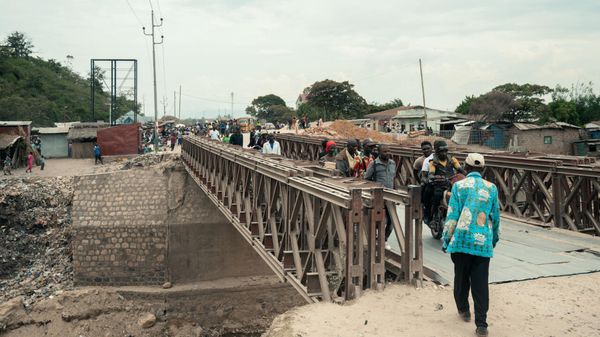
It is hardly surprising that when Spain suddenly and mysteriously lost half its power supply on Monday, throwing the country into chaos, thoughts immediately turned to the possibility of a cyber attack. The threat of a hostile power gaining access to our infrastructure in order to provoke a catastrophic failure has preoccupied security expects for years, leading, for example, to the Conservative government reversing its decision to allow a company close to the Chinese government to build Britain’s 5G network.
Spanish authorities still have no answer as to what caused the blackout, but the reason will almost certainly turn out to be more mundane. It will very likely be related to Spain’s growing reliance on intermittent wind and solar, which engineers have long known makes an electricity grid more vulnerable to technical failure. Balancing supply and demand in a power grid is never an easy business, but it is a lot more difficult when you are dealing with wind farms and solar farms whose output varies massively from one day to the next, and cannot be controlled in the way a gas, coal or nuclear power station can.
Could the UK be hit by a power outage?
The obvious question many will want to ask is: could it happen in Britain? To which the answer is yes, it already has. In August 2019 a gas power station in Bedfordshire and a wind farm off Lincolnshire suffered unrelated faults almost simultaneously.
Meanwhile, a lightning strike caused a number of smaller power generators to fail. The sudden loss of power was more than back-up supply could cope with, causing a million homes to lose power and 500 trains to be cancelled. While the power stations were only down for 45 minutes, the knock-on effects took far longer to resolve.
In a report into the incident, Ofgem warned that net zero targets were making the grid more susceptible to large-scale outages, and advised the government to consider the consequences.
There are two essential problems: firstly, the lack or predictability in output from wind and solar. In any grid, demand is subject to short-term fluctuations – the classic example being when everyone gets up to put the kettle on at half time in the FA Cup Final. But where most electricity is generated by fossil fuels or nuclear supply is relatively easy to control.
What happens, though, when half time in the Cup Final coincides with a sudden change in the weather? In a grid with a high level of renewables you have to worry about both sides of the equation: supply and demand.
The other problem is one of inertia. It helps, when balancing supply and demand, to have sources of power which can smooth out fluctuations in output. In traditional power stations – whether coal, gas or nuclear – the spinning turbines help to do this.
It is rather like the flywheel on a car engine which helps smooth out what would otherwise be jerky output of power from the pistons. There are ways to provide more inertia into a grid powered by wind and solar -- you can build massive flywheels to do the job which is usually done by the turbines, for example.
But it is, of course, expensive. The construction of wind and solar farms to hit Ed Miliband’s target of decarbonising the grid by 2030 is running well ahead of the grid’s capacity to cope – some wind farms have been warned it will take years to connect them.
To add to the problems, there is a mismatch between where wind and solar energy is generated and where it is consumed. Britain’s electricity grid was built around a small number of large coal-fired power stations in the Midlands, close to factories and centres of population where demand for power is highest. Building a grid around dispersed wind and solar means electricity must be transmitted over far long distances – meaning there is much more scope for things to go wrong.
We are also becoming increasingly reliant on electricity imported via subsea cables – which accounted for 13 percent last year. The increasing interconnections between national power grids makes us vulnerable to what happens in other countries – on Monday Portugal and parts of France also suffered blackouts.
Spain is even more vulnerable than Britain to blackouts in that around half of its electricity is now generated by wind and solar, compared with a third in Britain. But we are very much heading in the same direction – by 2030 the government wants 80 percent of our power to come from wind and solar.
Without far more thought being put into the resilience of the grid, what happened in South East England in 2019 and in Spain on Monday threatens to become commonplace.
Ross Clark is the author of Not Zero: How an Irrational Target Will Impoverish You, Help China (and Won’t Even Save the Planet)







